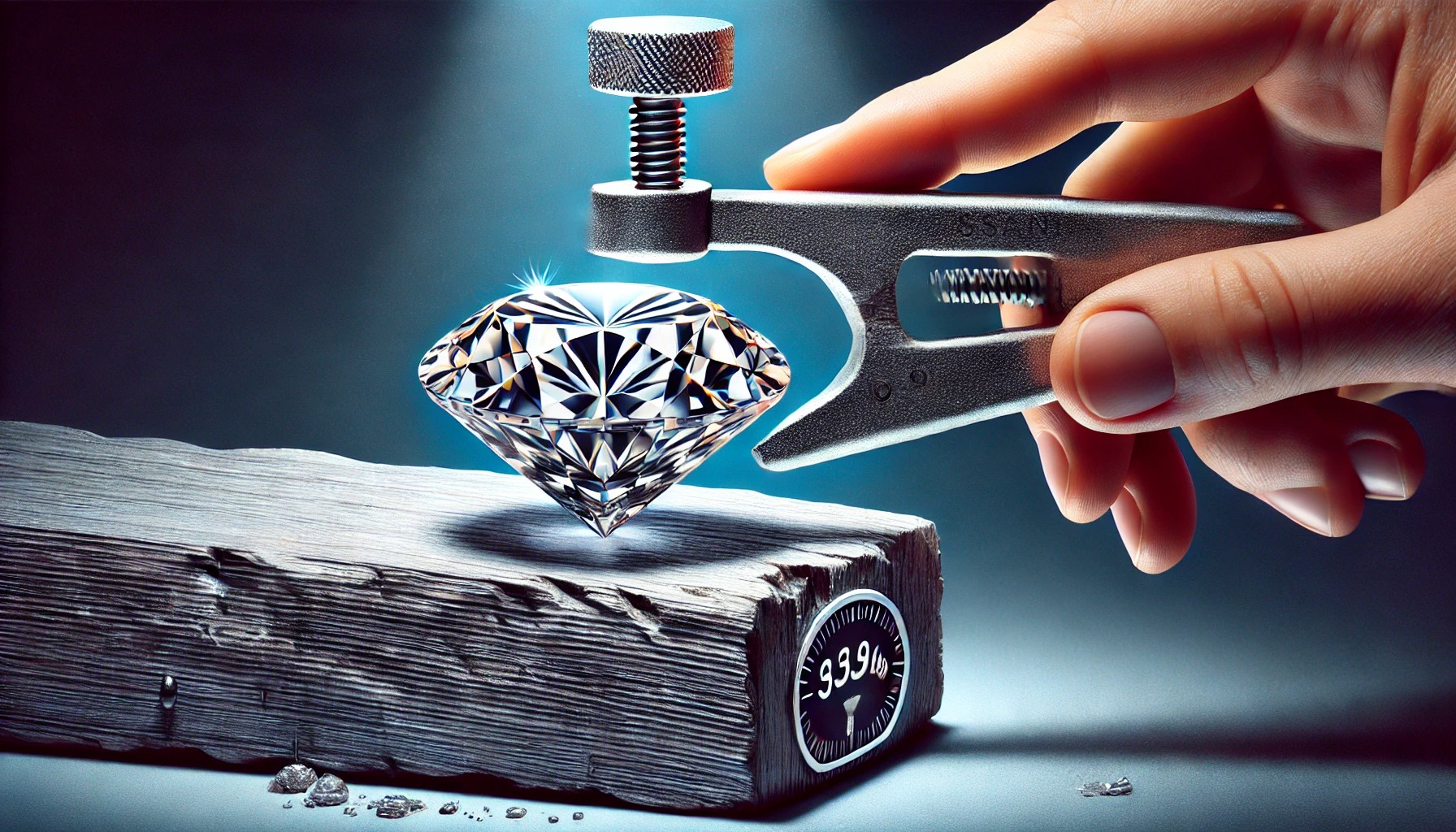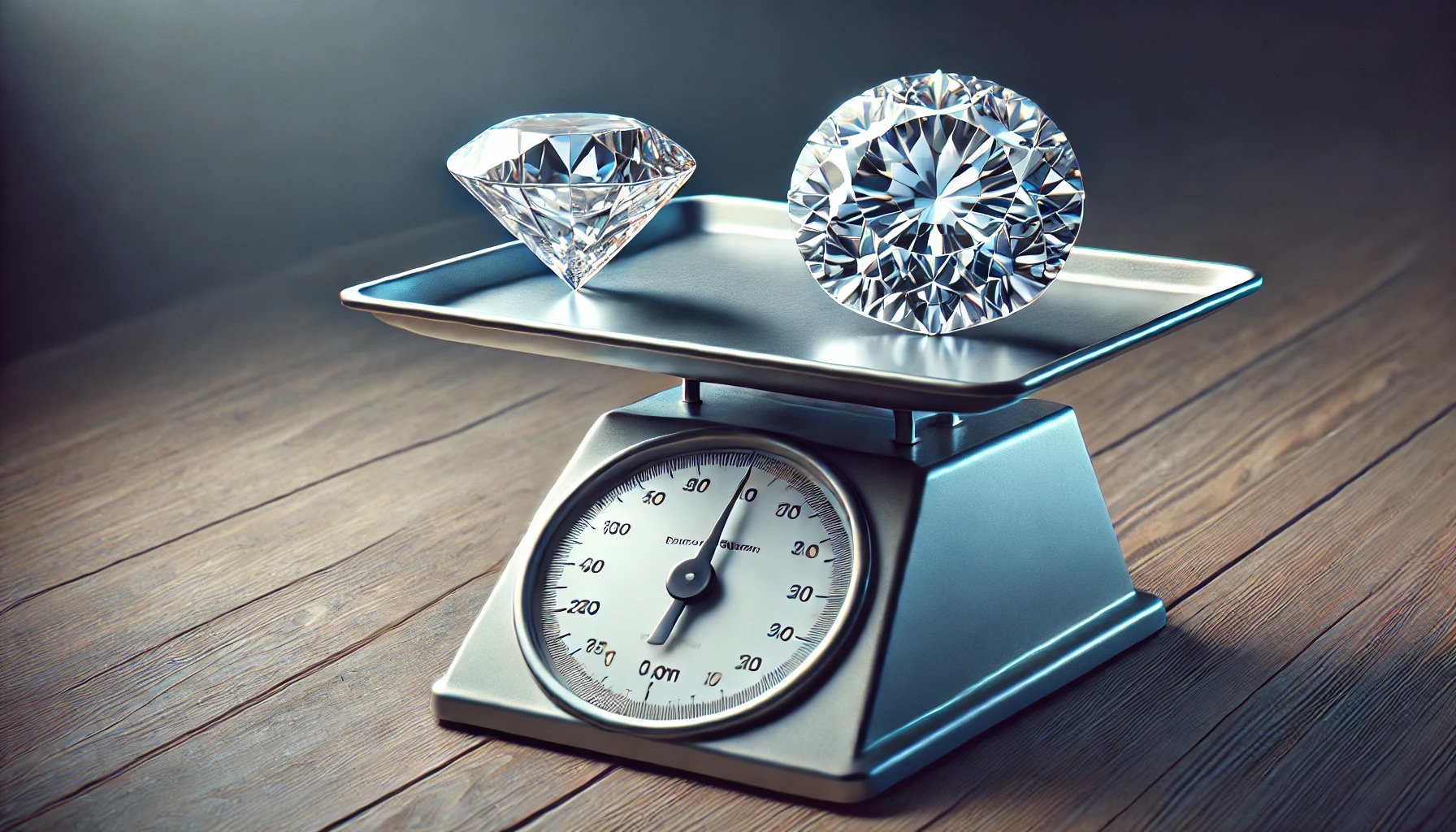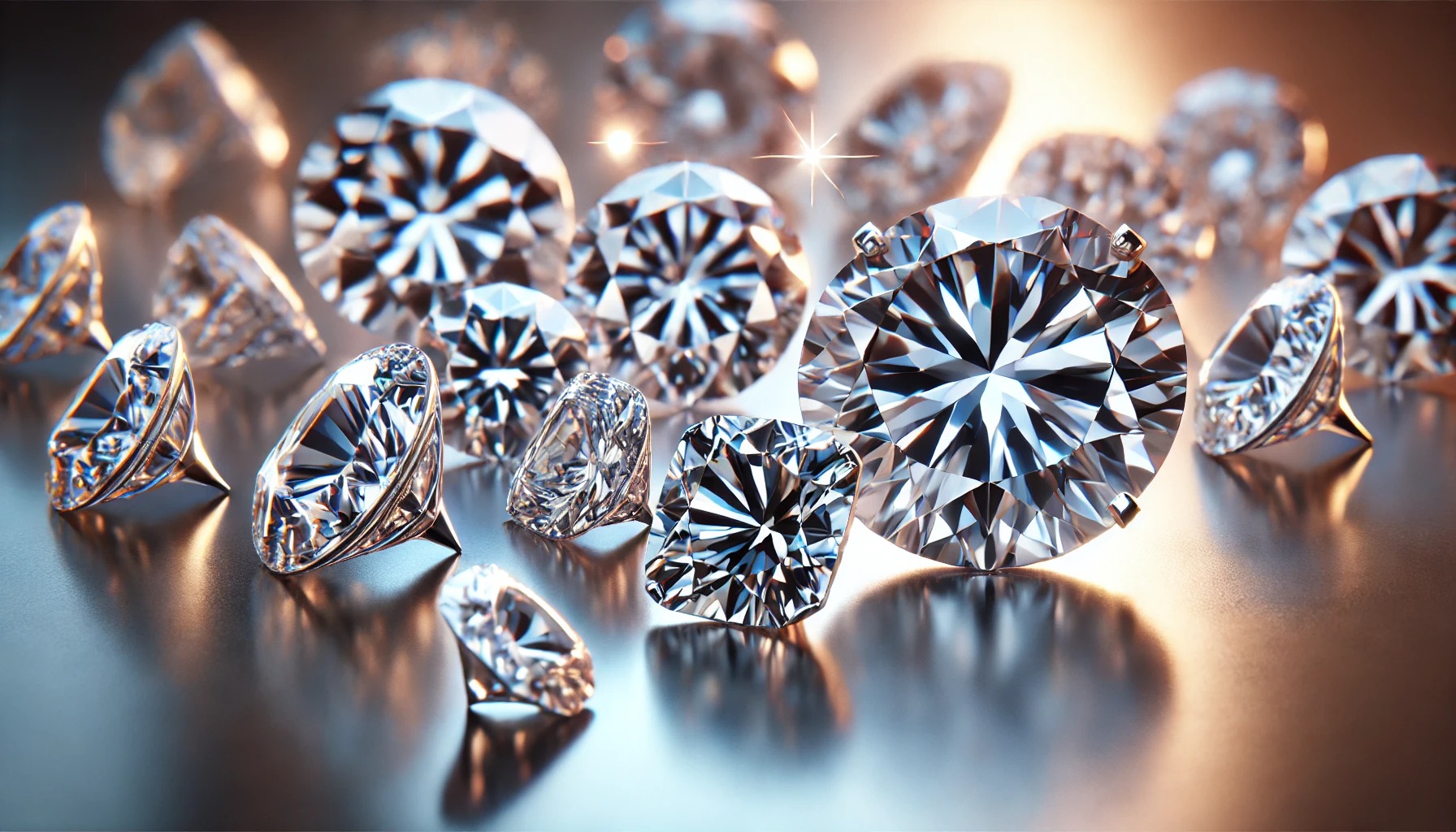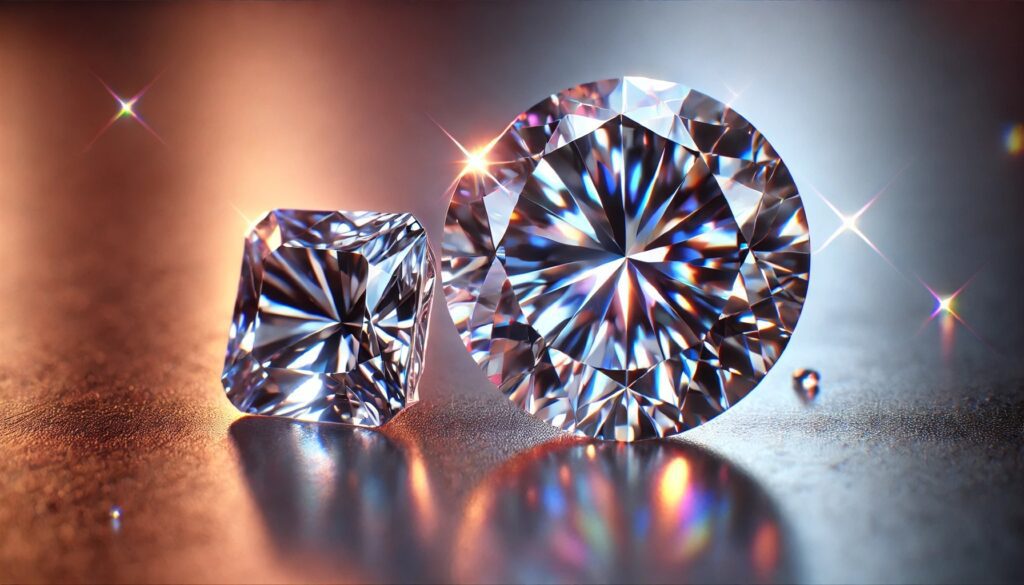Moissanite vs. Cubic Zirconia: A Comprehensive Guide
Choosing the perfect gemstone for jewelry, particularly for engagement rings and fine jewelry, often comes down to a debate between popular diamond alternatives. Two of the most well-known substitutes are moissanite and cubic zirconia (CZ). Both offer the appeal of a brilliant stone without the hefty price tag of a natural diamond. However, they differ significantly in terms of their physical properties, durability, and aesthetic value. In this comprehensive guide, we will explore the key differences between moissanite and cubic zirconia to help you make an informed decision.
Overview of Moissanite and Cubic Zirconia
Before diving into the specific comparisons, it’s essential to understand what moissanite and cubic zirconia are, where they come from, and why they are popular.
Moissanite
Moissanite is a gemstone originally discovered in 1893 by French chemist Henri Moissan. It is composed of silicon carbide and was first found in meteorites. Natural moissanite is incredibly rare, so today’s moissanite is almost entirely lab-created. Known for its fire and brilliance, moissanite is a popular choice for engagement rings and fine jewelry, offering a diamond-like appearance but with unique optical properties.
- Chemical composition: Silicon carbide (SiC)
- Hardness: 9.25 on the Mohs scale
- Color: Near colorless to faint hues
Cubic Zirconia (CZ)
Cubic zirconia, first produced in the 1970s, is a synthetic material made from zirconium dioxide. It is often used as a diamond simulant due to its affordability and high refractive index, giving it a similar sparkle to diamonds. Though CZ is visually appealing, it is softer than moissanite and diamonds, making it less durable over time.
- Chemical composition: Zirconium dioxide (ZrO₂)
- Hardness: 8.0–8.5 on the Mohs scale
- Color: Completely colorless, but can be produced in a variety of colors
Brilliance and Fire
Brilliance: This refers to how much light is reflected back from the stone’s surface.
Moissanite: Known for its exceptional brilliance, moissanite has a higher refractive index (2.65) than both cubic zirconia and diamonds. Its faceting and structure allow for greater light return, meaning it often sparkles more intensely than a diamond, particularly under bright lighting.
Cubic Zirconia: With a refractive index of 2.15–2.18, CZ has decent brilliance but does not match the intense sparkle of moissanite. While it shines brightly when new, over time it can lose some of its sparkle due to scratches on its softer surface.
Fire: The dispersion of light into various colors, creating a “rainbow” effect.
Moissanite: Moissanite has a much higher dispersion rate (0.104) compared to cubic zirconia and diamonds, which gives it a more fiery, rainbow-like sparkle. Some people love this effect, while others may find it too intense or artificial.
Cubic Zirconia: Cubic zirconia has a lower dispersion (0.060) than moissanite, resulting in less fire and fewer rainbow effects. Its sparkle is closer to a diamond’s but lacks the same depth and radiance.

Durability and Hardness
Durability is crucial, especially for rings that are worn daily, like engagement rings. A gemstone’s hardness is measured on the Mohs scale, with diamond rated the hardest at 10.
Moissanite: With a hardness of 9.25, moissanite is one of the hardest gemstones available, making it highly scratch-resistant and suitable for daily wear. Its durability is second only to diamonds, meaning it can withstand significant wear and tear over time without losing its brilliance or clarity.
Cubic Zirconia: Rated between 8.0 and 8.5 on the Mohs scale, cubic zirconia is more prone to scratching and abrasion than moissanite. Over time, CZ stones can become cloudy and lose their shine, especially if they are not cared for properly. This makes CZ less durable for long-term use, particularly in rings that are worn every day.
Color and Clarity
Moissanite
- Color: Moissanite typically comes in a near-colorless range, with modern lab-created stones graded from D to G on the diamond color scale. However, moissanite can sometimes exhibit a yellow or grayish tint in certain lighting conditions, particularly in larger stones.
- Clarity: Moissanite tends to be very clear, with few internal flaws. Lab-created moissanites are often rated high in clarity, meaning they are free from visible inclusions or imperfections.
Cubic Zirconia
- Color: CZ is often completely colorless, which is one of its appealing features. It can be manufactured in various colors, but as a diamond substitute, its default is a perfect, clear appearance. Some, however, may find this too “perfect” and lacking the natural character of a real gemstone.
- Clarity: Cubic zirconia is typically flawless and free from inclusions. However, its clarity may degrade over time as it scratches more easily than moissanite.
Price
Moissanite: While far more affordable than diamonds, moissanite is considerably more expensive than cubic zirconia. The cost of moissanite depends on the size, cut, and whether it’s premium or standard quality, but even smaller moissanites can cost hundreds of dollars.
Cubic Zirconia: CZ is known for its affordability. A cubic zirconia stone of the same size as a moissanite or diamond can be a fraction of the price, often costing only a few dollars per carat. This makes CZ a popular option for costume jewelry or as a temporary replacement in settings that might later be upgraded to more valuable stones.

Weight
Moissanite: Moissanite is lighter than cubic zirconia. This means that, carat for carat, a moissanite stone will weigh less than a CZ stone of the same size.
Cubic Zirconia: CZ is denser than moissanite, meaning that a cubic zirconia stone of the same carat weight will appear slightly smaller than a moissanite stone. Some people may prefer the slightly heavier feel of CZ, while others might favor the lighter, airier quality of moissanite.
Environmental and Ethical Considerations
Moissanite: Since moissanite is almost entirely lab-created, it is considered an environmentally friendly and ethical choice. Lab-grown gemstones require significantly fewer resources and create less environmental impact compared to the mining of natural diamonds or other stones.
Cubic Zirconia: CZ is also lab-created, meaning it similarly avoids the ethical and environmental issues associated with mined stones. It’s an excellent option for those looking for a conflict-free gemstone.

Cut and Shape Variety
Moissanite: It is available in a wide range of shapes, such as round, oval, pear, and cushion. Moissanite’s faceting and cut emphasize its brilliance, and round cuts tend to maximize its sparkle.
Cubic Zirconia: Similar to moissanite, CZ is also available in a variety of cuts, from round to princess and marquise. However, its brilliance is typically less intense than moissanite, especially in larger stones.
Heat Resistance
Moissanite: Moissanite is highly heat resistant and can withstand the high temperatures involved in jewelry setting and repairs without losing its integrity or brilliance.
Cubic Zirconia: CZ is more vulnerable to heat, and it can crack or change color if exposed to high temperatures. This makes CZ less suitable for jewelry that requires regular maintenance or resetting.
Long-term Appearance
Moissanite: Due to its hardness and scratch resistance, moissanite retains its brilliance and clarity for decades, even with daily wear. Its durable nature ensures that it looks as good as new for longer.
Cubic Zirconia: Over time, CZ can become cloudy or scratched, which reduces its sparkle and brilliance. Regular polishing can help restore its shine, but it may eventually need to be replaced.
Certification and Grading
Moissanite: Moissanites are graded for color, clarity, and cut, similar to diamonds. Premium moissanites are closer to the D-F range on the diamond color scale, and certificates are often provided with high-quality stones.
Cubic Zirconia: CZ is not typically graded or certified since it is mass-produced and has a lower value. Its affordability often outweighs the need for certification.
Cleaning and Maintenance
Moissanite: Moissanite requires minimal maintenance. Regular cleaning with mild soap and water or a gentle jewelry cleaner can keep it sparkling.
Cubic Zirconia: CZ requires more frequent cleaning and polishing due to its softer surface, which can accumulate scratches and oils more quickly. Using a non-abrasive cleaner can help restore its shine.
Resale Value
Moissanite: Moissanite generally retains some of its value over time, though it does not hold its value as well as diamonds. However, its durability and brilliance make it a worthwhile investment for many.
Cubic Zirconia: CZ has little to no resale value due to its low cost and widespread availability. It is primarily considered for short-term use or costume jewelry, where resale is less of a concern.
Which is Better for You?
Ultimately, the choice between moissanite and cubic zirconia comes down to your personal preferences, budget, and intended use for the stone.
- Choose Moissanite if:
- You want a durable, long-lasting gemstone that retains its brilliance and fire for many years.
- You prefer a gemstone with intense sparkle and fire, even more than a diamond.
- You are looking for a high-quality diamond alternative that balances affordability with elegance.
- Durability is a key factor, particularly for rings or jewelry worn daily.
- Choose Cubic Zirconia if:
- You need an affordable, short-term option that looks visually similar to a diamond but at a fraction of the cost.
- You are purchasing costume jewelry or pieces where long-term durability is not a concern.
- You want a flawless, perfectly clear stone at a very low price point.
- You don’t mind the potential for scratches and cloudiness over time in exchange for significant savings.
Conclusion
Moissanite and cubic zirconia are both viable diamond alternatives, each with their unique strengths and weaknesses. Moissanite excels in terms of brilliance, durability, and long-term value, making it the superior choice for engagement rings and fine jewelry intended for everyday wear. Cubic zirconia, while less durable and less brilliant, is incredibly affordable and ideal for those looking for a temporary or budget-friendly option. Understanding the differences between these two stones can help you select the one that best aligns with your needs and preferences, whether you prioritize longevity, affordability, or aesthetic appeal.

